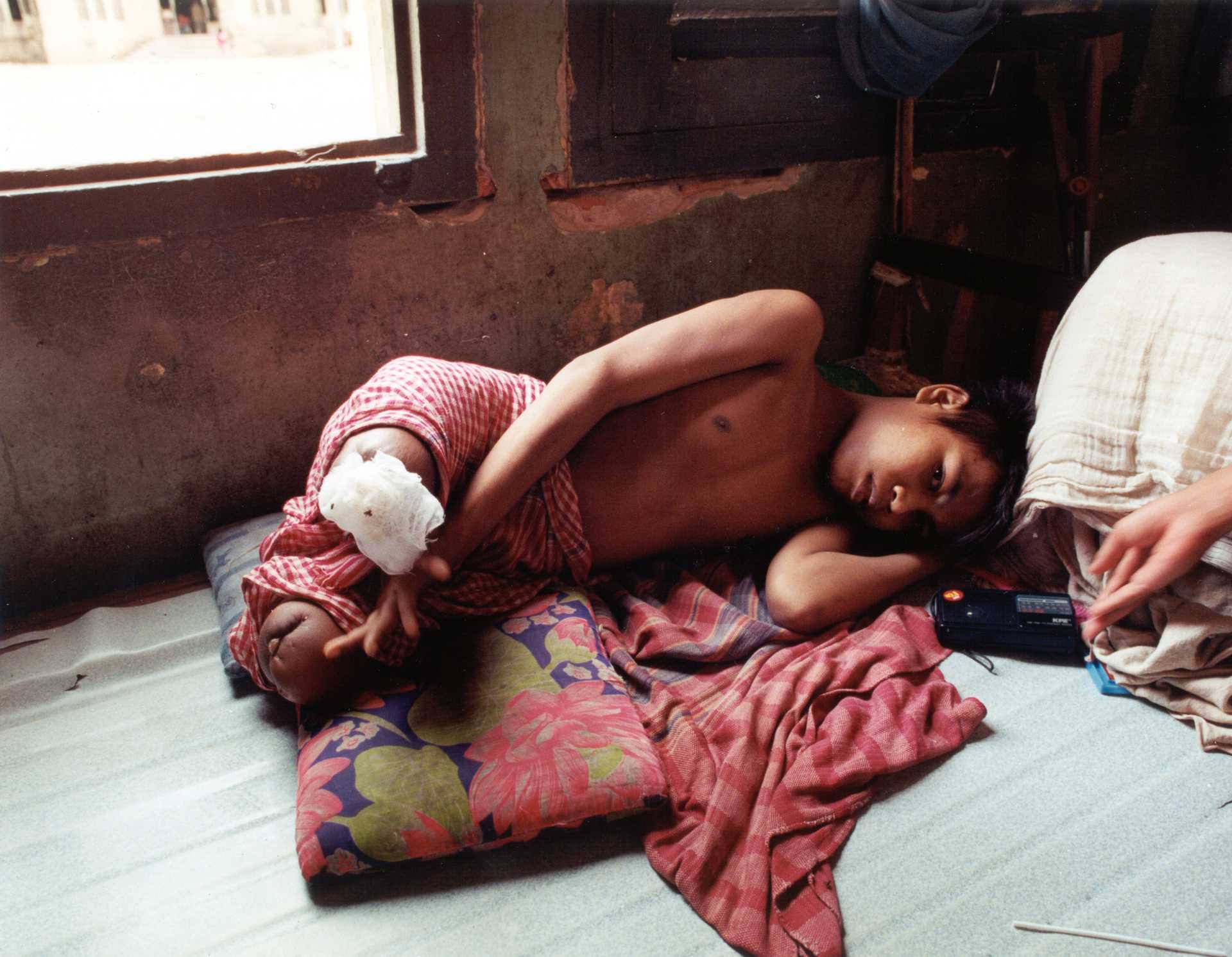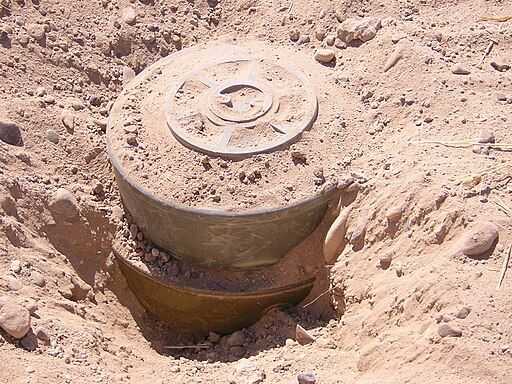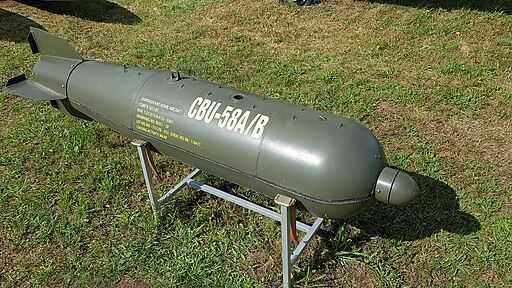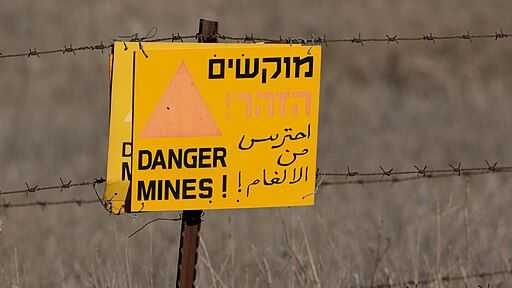What is ‘humanitarian arms control’?
Anti-personnel landmines and cluster munitions have been banned because they take a heavy toll on civilian lives and impede post-conflict reconstruction and development. In the late 1980s and early 1990s, even as Cold War-era conflicts were coming to an end, thousands of civilians were still being killed and maimed by landmines.
Trigger warning! The photo on the next tab shows the unpixelated image of a young landmine victim, Phnom Penh Hospital.

It was at this juncture that humanitarian arms control emerged. United Nations officials, NGOs and scholars moved away from an exclusive focus on state security to concentrate on the security of individuals, or ‘human security’, and from arms control focused on preventing great power war to humanitarian arms control aimed at prohibiting weapons that endangered men, women and children in their daily lives. Landmines were referred to as ‘weapons of mass destruction in slow motion’, killing a person every 20 minutes. This humanitarian crisis sparked a civil society campaign that led to the adoption of the Mine Ban Treaty in 1997.
Soon after this, the bombing campaign in Kosovo, the wars in Afghanistan and Iraq and the 2006 Israeli-Lebanon War led to another humanitarian crisis in the making caused by the use of cluster munitions. Cluster munitions contain numerous small submunitions that cover wide areas and often function as landmines due to their high failure rates, thus threatening civilian lives both during and after conflicts. Another NGO campaign helped bring about their prohibition in 2008 with the Convention on Cluster Munitions.
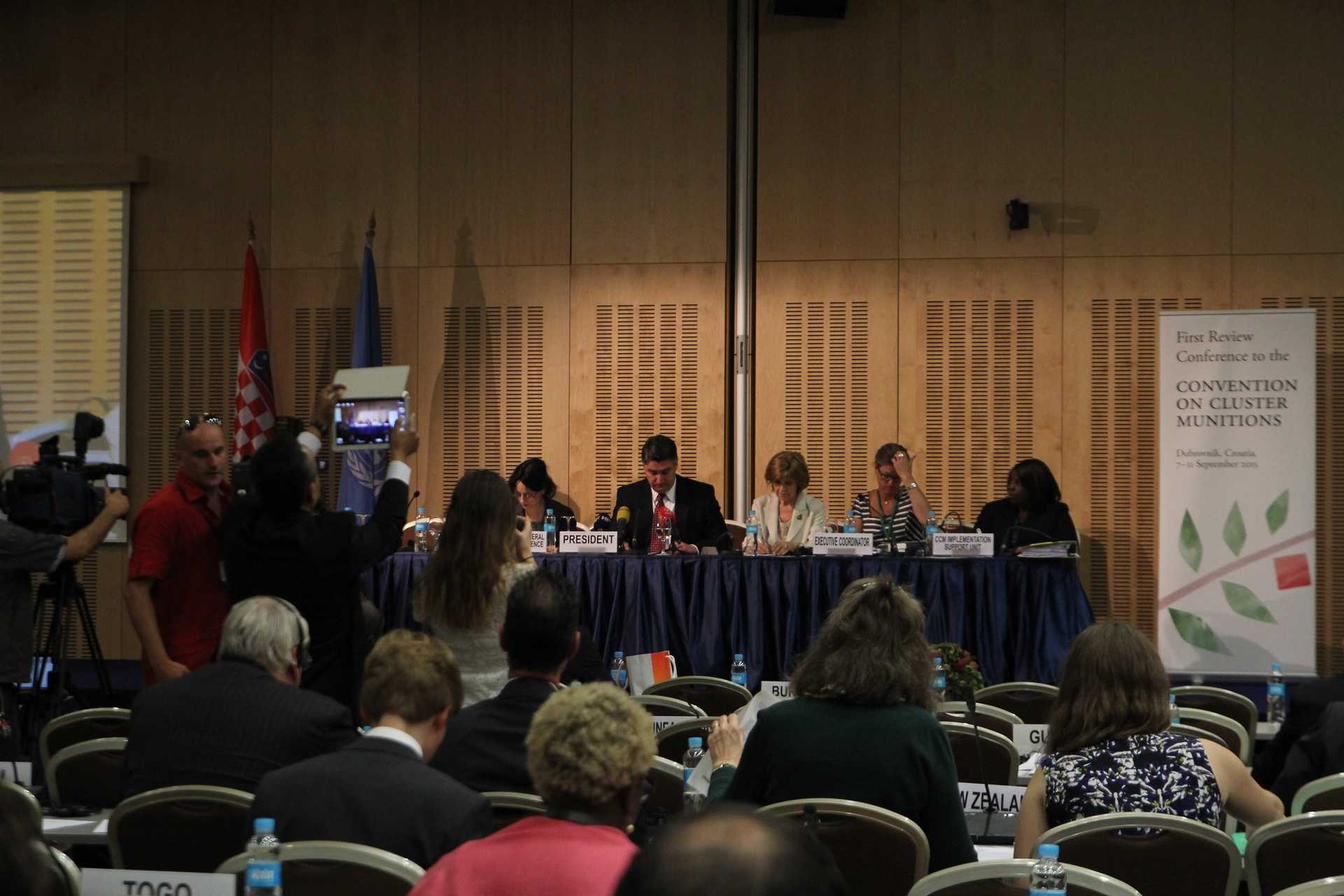
These treaties are hallmarks of humanitarian arms control and disarmament. They look at security and arms control through a humanitarian lens – focusing on the weapons’ effects on human lives and livelihoods and addressing them holistically.
They prohibit the weapons and require states to clear contaminated areas, provide victim assistance and educate people about the risks of these weapons. The treaties have also prompted efforts to protect civilians against the effects of small arms, nuclear weapons and other means of warfare – initiatives that have advanced the field of humanitarian arms control in a changing international environment.
This unit will introduce you to the problems of anti-personnel landmines and cluster munitions and the legal frameworks that address them. It will help you understand the substance of humanitarian arms control, the dynamics that have led to its rise and its processes of implementation.
Next, I will offer some brief definitions of arms control, elaborate on the main principles of IHL and how it relates to weapons, and highlight the distinctive aspects of humanitarian arms control after the Cold War, the period we usually associate with the beginning of this approach.
What is arms control?
Arms control can be defined in different ways, some broader, others narrower (see also LU01, LU20). Here, I will adopt a narrow perspective and focus on the measures that prohibit certain weapons, their size, development, production, transfer, stockpiling or use, as well as those that manage, cap or lower weapons numbers.3
These measures can serve different purposes, foremost maintaining state security at a minimal cost, as well as establishing stability in interstate relations, allaying suspicions of aggressive intentions, diminishing the risk of war, or limiting a war’s destructiveness and its harmful effects on people and the environment.
Disarmament is a type of arms control that aims to eliminate certain (or all) weapons or reduce their numbers. While arms control and disarmament are sometimes used together or interchangeably, historically, disarmament was closely aligned with attempts to abolish war itself. Thus disarmament can be seen as antithetical to defence measures, which, from an arms control perspective, are essential for stable interstate relations.
During the Cold War, the two superpowers were the main players in the field of arms control. Arms control was primarily about containing the arms race and achieving stable mutual deterrence.4 In the prevailing climate of mutual suspicion, verification measures were important in order to increase the probability of states complying with their treaty obligations and to detect early any cheating.
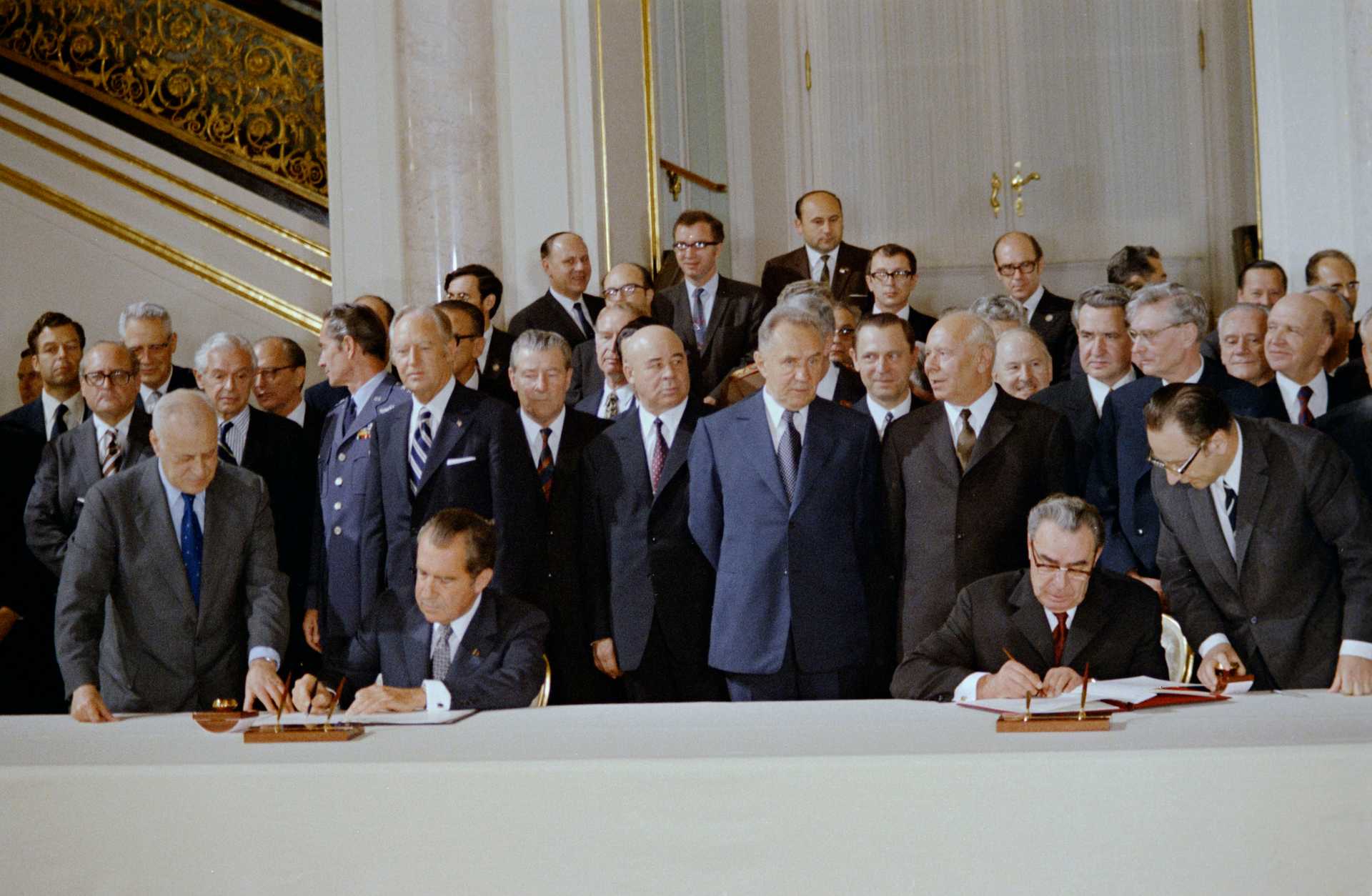
A strategic balance between the superpowers was established. However, it came at a high cost and with high levels of nuclear armaments, which at their peak in the mid-1980s reached some 70,000 nuclear warheads,5 more than half of which were acquired after the start of arms control efforts in the early 1960s. Hence, critics perceived arms control largely as a failure – it maintained the status quo and contributed to militarisation and ever higher defence expenditures. In sum, during the Cold War, arms control revolved around weapons of mass destruction (WMD), centred on the interests of great powers and was primarily a means to stabilise their relations.
What is international humanitarian law?
Humanitarian arms control is guided by humanitarian norms and values. These include basic human rights norms that protect the life and dignity of every human being, and importantly, humanitarian principles that apply during armed conflict. These principles are codified in international humanitarian law, and their breach is illegal (see also LU17). In such cases, there are legal grounds to argue that the use of certain weapons should be prohibited. This has helped NGOs strengthen their arguments by connecting the problems of landmines and cluster munitions with existing legal norms.
So, what is international humanitarian law (also referred to as the law of armed conflict, law of war, or IHL)? This set of rules regulates the conduct of military operations. It tries to balance military requirements with humanitarian values and prohibits violence that has no military purpose – causing unnecessary suffering to soldiers, harming civilians (who do not participate in hostilities), wounded and sick soldiers, and prisoners of war (who no longer fight). Given that IHL imposes certain limitations on the use of arms, these rules are sometimes considered a subset of arms control.6 There are both general and specific rules on weapons.
General IHL principles, in particular, Article 51 of the 1977 Additional Protocol I to the Geneva Conventions (AP-I), apply to the use of all weapons. Article 51 prohibits indiscriminate attacks, which
are not directed at a specific military objective;[…] which employ a method or means of combat which cannot be directed at a specific military objective; or […] are of a nature to strike military objectives and civilians or civilian objects without distinction
Article 51 of the 1977 Additional Protocol I to the Geneva Conventions (AP-I)
It also defines as indiscriminate and prohibits
an attack which may be expected to cause incidental loss of civilian life, injury to civilians, damage to civilian objects, or a combination thereof, which would be excessive in relation to the concrete and direct military advantage anticipated
Article 51 of the 1977 Additional Protocol I to the Geneva Conventions (AP-I)
Articles 35 specifically prohibits the use of weapons
of a nature to cause superfluous injury or unnecessary suffering
Article 35 of the 1977 Additional Protocol I to the Geneva Conventions (AP-I)
According to the International Committee of the Red Cross, the above principles reflect customary international law and are thus binding on all states irrespective of whether they have ratified the AP-I.7 Article 36 of API requires states parties that develop or acquire a new weapon to determine whether its use would be prohibited by the AP-I or other IHL rules. In other words, states need to act before developing weapons to ensure that all new weapons comply with IHL. While general IHL principles apply to all weapons, they do not directly ban specific weapons. Whether the use of a weapon is prohibited is assessed on a case-by-case basis and interpretation of the principles often differ, especially regarding what constitutes unnecessary suffering, superfluous injury, or disproportionate harm to civilians. Weapons prohibitions can be considered a way of giving meaning to the principles in practice and of reflecting a convergence of state opinion (but no unanimity) on whether weapons in their normal use would have indiscriminate effects or cause unnecessary suffering. Specific treaty provisions (e.g. banning the use of, stockpiling or transferring a weapon) remain legally binding only on those states that have ratified the respective treaty. Thus treaties prohibiting or restricting weapons both draw on and, over time, can clarify and develop IHL. This dynamic is at play in several treaties instituting weapons restrictions in the late 19th and early 20th centuries (summarised in Chapter 2). However, the use of the principles banning indiscriminate and disproportionate attacks on civilians in order to prohibit specific weapons became particularly prominent following the end of the Cold War.
Humanitarian arms control vs traditional arms control
Footnotes
-
Here I use humanitarian arms control and humanitarian disarmament interchangeably ↩
-
Borrie and Randin 2005, 2006. ↩
-
Here, even establishing rates of armament growth for states parties can be included when it contributes to the stability of their relations. ↩
-
Bull 1987. ↩
-
Kristensen, Korda and Reynolds 2024. ↩
-
E.g. Viotti 2012; Morgan 2012, 20; Vagts 2000, 31. ↩
-
https://ihl-databases.icrc.org/en/customary-ihl/v1/rule11; https://ihl-databases.icrc.org/en/customary-ihl/v1/rule12; https://ihl-databases.icrc.org/en/customary-ihl/v1/rule70; https://ihl-databases.icrc.org/en/customary-ihl/v1/rule71. ↩
